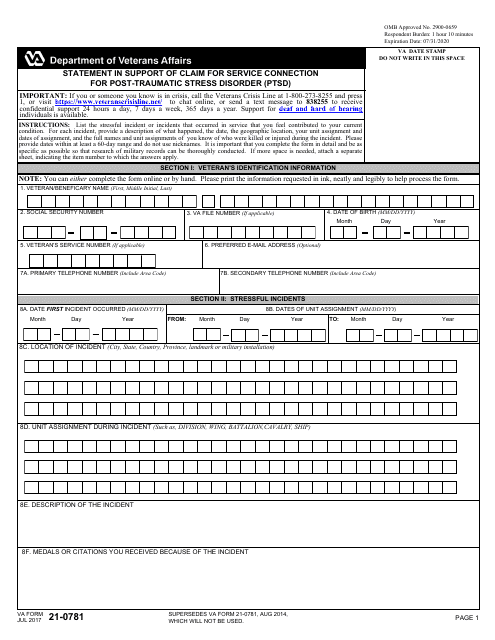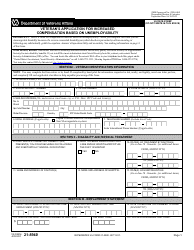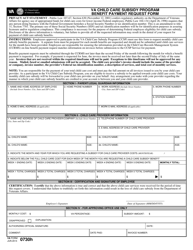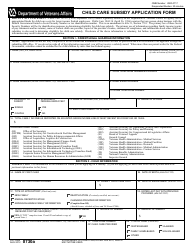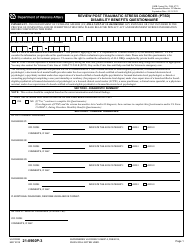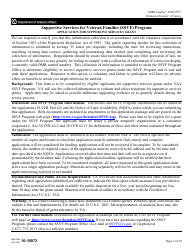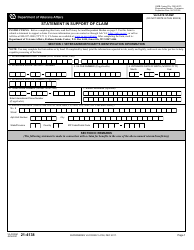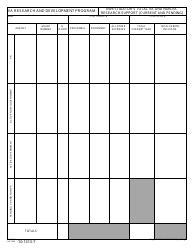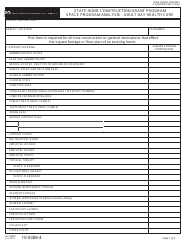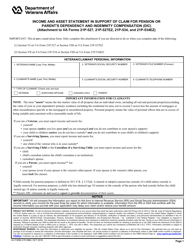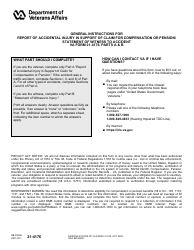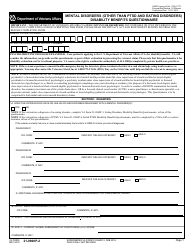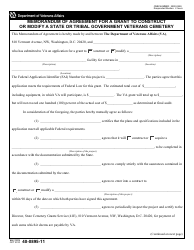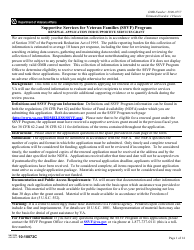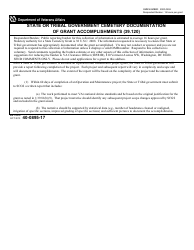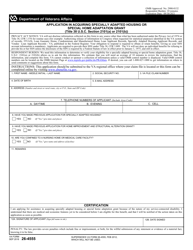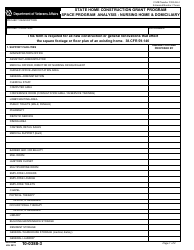VA Form 21-0781 Statement in Support of Claim for Service Connection for Post-traumatic Stress Disorder (PTSD)
What Is VA Form 21-0781?
VA Form 21-0781, Statement in Support of Claim for Service Connection for PTSD , is an application issued by the U.S. Department of Veterans Affairs (VA) and filled out by every individual looking to place a claim for service-related PTSD - or Post Traumatic Stress Disorder - with the VA. The claimants have to document the event or series of events that led to the disorder during their military service.
Alternate Name:
- VA PTSD Form 21-0781.
Veterans with a Purple Heart award, a Combat Infantryman Badge, or a Combat Action Ribbon may not be asked to fill out the form when applying for a VA disability compensation. The VA should notify you if the filing is necessary.
The latest version of the form was released on July 1, 2017 , with the previous edition obsolete. An up-to-date VA Form 21-0781 fillable version is available for digital filing and download below.
VA Form 21-0781 and 21-0781A
Another form that can be filled out to claim service-connected PTSD is VA Form 21-0781A, Statement in Support of Claim for Service Connection for Posttraumatic Stress Disorder (PTSD) Secondary to Personal Assault, which should be completed by veterans who have been diagnosed with PTSD due to a personal assault during their service that contributed to their current condition. The form asks to list the particular stressful incident or incidents and provide additional information on the event.
The VA Administration will initiate their own investigation order to assess whether the applicant is owed any benefits in connection with the incident. The applicant also has to specify all available sources and list the witnesses that may give any supporting information concerning the reported assault.
If a veteran would like the VA to obtain the treatment records from a healthcare provider, VA Form 21-0781A should be submitted along with the Statement in Support of Claim for Service Connection Post-Traumatic Stress Disorder.
VA Form 21-0781 Instructions
The form does not have to be written in one sitting. Talk to a counselor, a friend, or a therapist before beginning the work on your statement if you feel too stressed when recalling the details of the event.
You will need to have your military records at hand to fill out the form. The records will help you to identify all dates, times, and places correctly. Other valuable sources of information are letters that may have been written home as well as any emails or text messages, Facebook and other social media posts, and diary entries. Remember to include the following key points when filling out VA Form 21-0781:
- Identify the stressful service-connected incident or incidents that you feel have contributed to your current condition;
- Provide a detailed description of what happened in every case;
- All of the related dates, geographic locations, units, and dates of assignment should be provided in the form;
- Use full names and provide the specific unit assignments of all of the participants of the incident that you know of.
Do not use nicknames or abbreviations. The provided dates, if estimated, must be within a 60-day range.
Writing the PTSD claim can be extremely difficult because of a need to remember traumatic events and to be accurate about details, but it is something that has to be done. Here are the steps that you should follow:
- Write a stressor statement for PTSD explaining what happened to you as clearly as you can. A person reading the statement needs to be able to put themselves in your position and understand what you went through.
- Try to remember all the details (dates, locations etc.) and record them in VA Form 21-0781.
- Make sure that a doctor has diagnosed you with PTSD and that the condition has been officially connected with your military service.
- File your claim. If your claim is denied after verification, you will receive clear reasons why you have been denied. You will then be able to adequately respond or file the claim again.
How to Properly Fill Out VA Form 21-0781?
The applicants have to detail the in-service event which may have contributed to the claimed PTSD. The information that should be included in the veteran's best interest includes the following:
-
The information regarding the symptoms of the disorder: how long they lasted, whether they create distress or limit the ability to function in a normal way, etc.
-
The applicant has to specify whether the incident included witnessing death, threatened death, an actual or threatened serious injury, or actual or threatened sexual violence. The claim should include information about the way of exposure to the event which may include:
- Direct exposure;
- Witnessing the trauma in person;
- Indirect exposure by knowing that a close friend or family member underwent a particularly traumatic experience;
- Indirect exposure by performing professional duties (e.g., first responders, collecting body parts, professionals repeatedly exposed to instances of child abuse).
-
The information about re-experiencing the event via nightmares or flashbacks.
-
The applicant must disclose if they specifically avoid trauma-related thoughts or feelings, people, places, conversations, or activities.
-
The claim must state whether a veteran has any negative thoughts or feelings that appeared or worsened after the event. These may include an inability to recall key features of the trauma, negative thoughts about oneself or the world, decreased interest in (pre-traumatic) activities, or difficulties in experiencing positive emotions;
-
The applicant must disclose the information about any trauma-related changes in behavior and personality (e.g., irritability or aggression, risky or destructive behavior, hypervigilance, heightened startle reaction, difficulty concentrating or sleeping, etc.).
